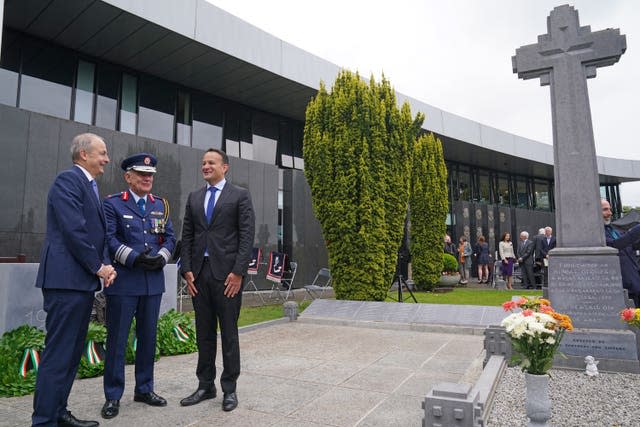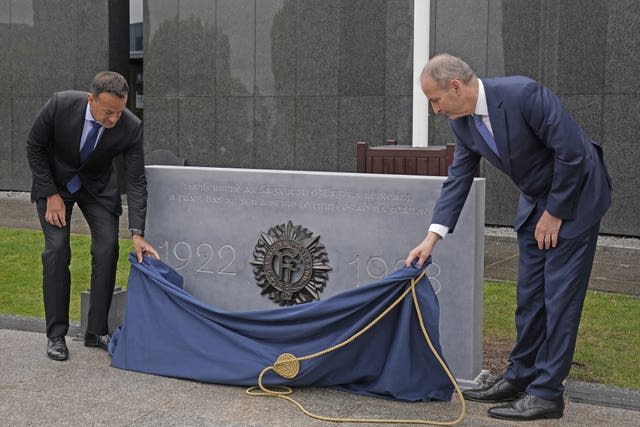Memory of fallen National Army soldiers ‘rehabilitated’ as monument unveiled
The rededication of a memorial to the National Army soldiers killed in the Civil War enables their memory to be rehabilitated, a ceremony in Dublin has heard.
Defence Forces Chief of Staff Lieutenant General Sean Clancy paid tribute to the some 810 soldiers killed serving on the Free State side in the 1922-23 conflict as he addressed the event at Glasnevin cemetery on Sunday.
Descendants of some of those who died, representative of all four provinces on the island of Ireland, were invited guests at the ceremony, among them relatives of Michael Collins, the commander in chief of the National Army who was killed in 1922.

Government coalition partners Taoiseach Leo Varadkar and Tanaiste Micheal Martin, the leaders of Fine Gael and Fianna Fail, the two main parties forged from the divisions of the Civil War, also attended the rededication of the National Army Monument.
Sinn Fein TD Matt Carthy also attended the military commemoration, as did Dublin Lord Mayor Daithi de Roiste.
Prior to the ceremony, there was no monument in Ireland specifically dedicated to the soldiers of the National Army who fought against the anti-Treaty side in the Civil War.
Weeks after the war ended, on August 3, 1923, the Oireachtas passed legislation that led to the creation of the modern-day Irish Defence Forces, Oglaigh na h Eireann.
The rededication event for the forgotten fallen of the National Army, which had already adopted the name Oglaigh na h Eireann during the Civil War, took place on the Sunday prior to the centenary of that date.
“It is appropriate then, in the spirit of real inclusiveness, of ethical remembering, and with a full desire to deal with some of the more uncomfortable aspects of our shared history, that we remember some of 810 uniformed members of Oglaigh na h Eireann who gave their lives in the service of the state during the tragic and critical period at the foundation of our democracy,” Lt Gen Clancy told the ceremony.
“For far too long there has been no memorial of any kind, nor any complete listing of the National Army war dead.
“Indeed, this year represents perhaps the last real opportunity to rectify that.”

The remains of some 180 of the 810 soldiers who died serving in the National Army are buried at the plot in Glasnevin cemetery.
“Sources at the archives show that the average soldier buried here was in his early 20s, was unmarried and from a working-class background,” said Lt Gen Clancy.
“Many had previously served in the IRA during the War of Independence, some even in the 1916 rising, many others had served in the British Army, underlying yet again how complex is the weave of Irish history.”
The chief of staff highlighted the “poignant example” of two young Belfast-born Dublin-raised brothers – Frederick (18) and Gerald McKenna (16) – who were buried in Glasnevin after being killed together in action in Cork in August 1922 only a month after joining the National Army.
“Whatever the often very legitimate reasons our forebears may have had for forgetting in the intervening 100 years, I think it’s appropriate now that I as the 32nd Chief of Staff of Oglaigh na h Eireann should finally take this opportunity to rehabilitate their memory,” said Lt Gen Clancy.


